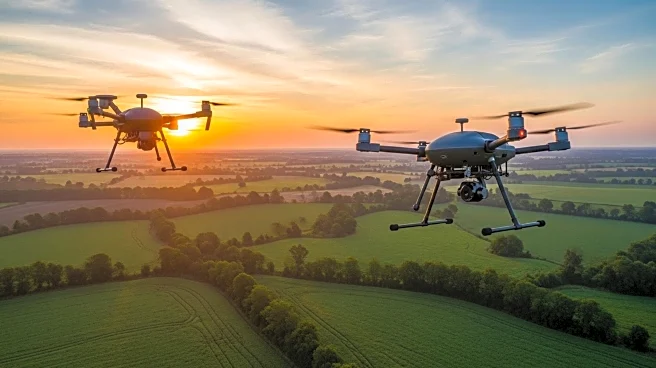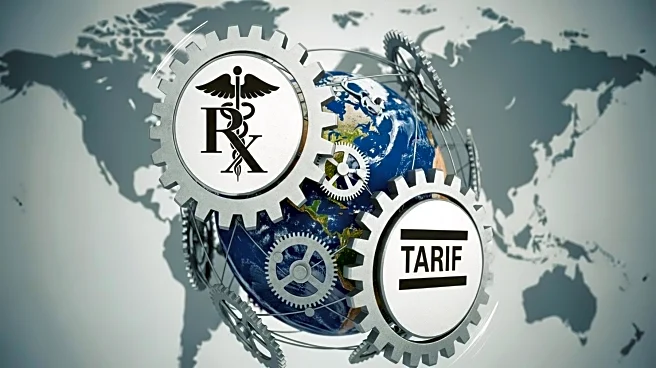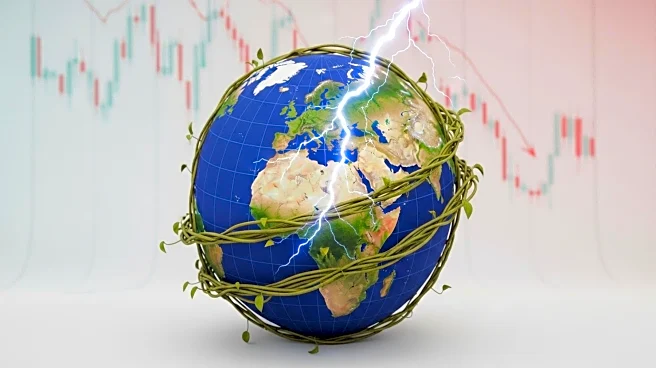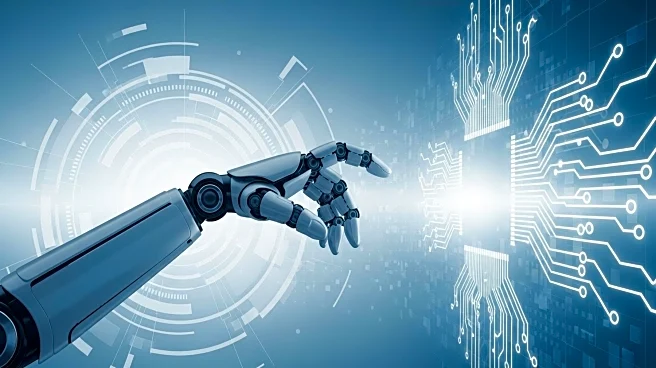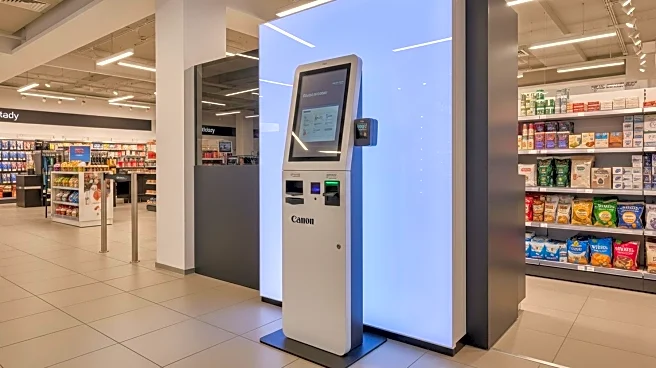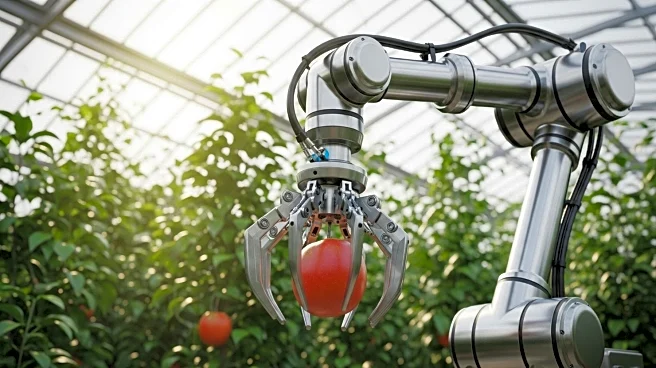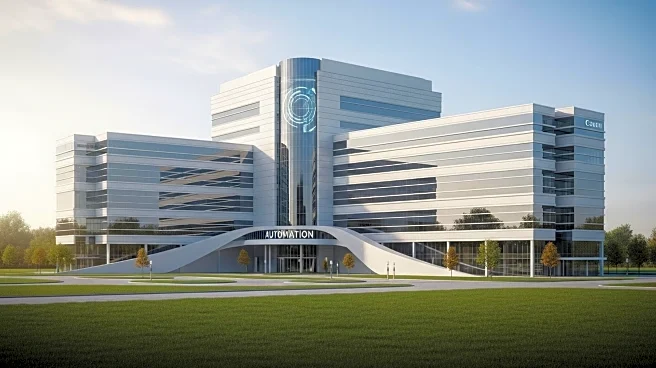What is the story about?
What's Happening?
The precision farming market in the United States is projected to grow at a compound annual growth rate (CAGR) of 7.50% from 2024 to 2031. Recent developments in the industry include Bonsai Robotics securing $15 million in Series A funding to develop autonomous machines for harvesting tree crops, addressing labor shortages in farming. John Deere has unveiled a fleet of fully autonomous heavy equipment, including tractors capable of efficiently spraying pesticides and fertilizers, enhancing precision in crop management. Monarch Tractor has seen increased demand for its autonomous feed-pushing technology in dairy farms, reflecting the growing interest in automation to address labor shortages. These advancements highlight the industry's focus on integrating technology to improve efficiency and sustainability in agriculture.
Why It's Important?
The growth of the precision farming market in the U.S. is significant for the agriculture industry, as it addresses critical challenges such as labor shortages and the need for sustainable practices. By adopting autonomous machines and advanced technologies, farmers can improve crop management, reduce chemical usage, and enhance overall efficiency. This shift towards technology-driven farming practices is likely to have a positive impact on the environment and food production, contributing to the industry's long-term sustainability. Additionally, the integration of technology in agriculture could lead to new business opportunities and economic growth, benefiting stakeholders across the supply chain.
What's Next?
As the precision farming market continues to grow, further advancements in technology and automation are expected. Companies like Bonsai Robotics and John Deere may continue to innovate, developing new solutions to enhance efficiency and sustainability in agriculture. The adoption of AI-driven smart agriculture systems is anticipated to increase, with over 50% of Japanese farms expected to integrate such systems by 2025. This trend may influence U.S. farming practices, encouraging the adoption of similar technologies. The industry may also see increased investment in research and development, driving further innovation and growth.
Beyond the Headlines
The rise of precision farming and automation in agriculture could have broader implications for the industry and society. It may lead to a shift in labor dynamics, with a reduced dependency on manual labor and an increased demand for skilled workers in technology and data management. This transition could impact rural communities and workforce development, necessitating new training and education programs. Additionally, the focus on sustainability and efficiency may drive policy changes and regulatory developments, influencing the future of agriculture in the U.S.
AI Generated Content
Do you find this article useful?
